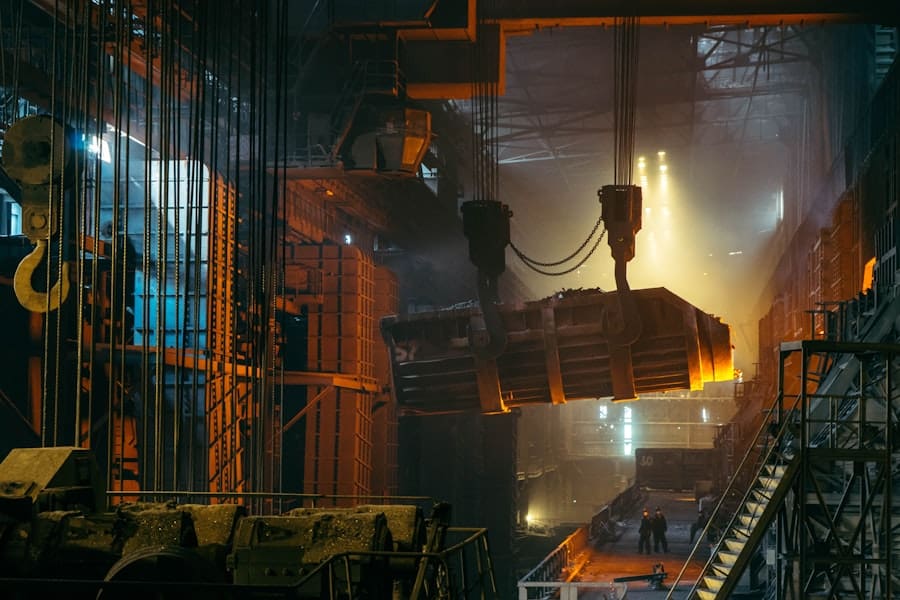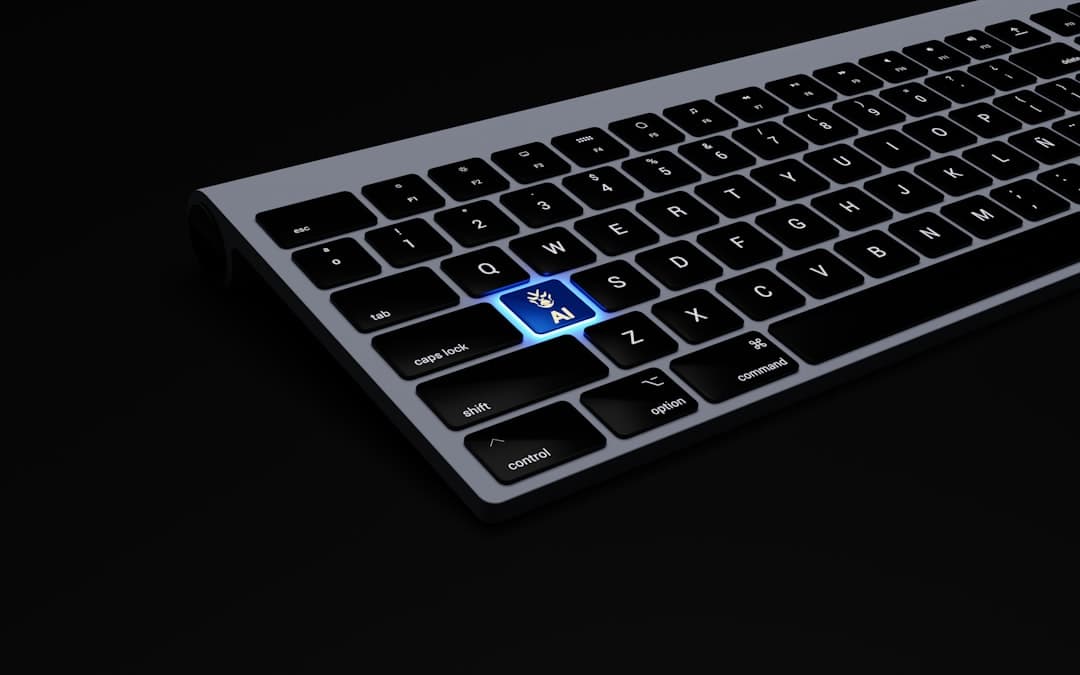The industrial metaverse is a virtual, interconnected environment that integrates physical and digital elements to create an immersive experience for businesses and industries. This concept extends beyond traditional virtual and augmented reality, incorporating technologies such as 3D modeling, simulation, artificial intelligence, and the Internet of Things (IoT). In the industrial metaverse, physical objects and environments are digitized and integrated into a virtual space, enabling real-time interaction and collaboration.
A key feature of the industrial metaverse is its ability to create digital twins of physical assets, including machinery, equipment, and production facilities. These digital replicas can be used for monitoring, maintenance, and optimization purposes. By utilizing the industrial metaverse, businesses can gain valuable insights into their operations and make data-driven decisions to enhance efficiency and productivity.
The industrial metaverse relies on advanced networking and communication technologies to connect various elements of the virtual and physical worlds. This includes high-speed internet, low-latency connectivity, and secure data transmission protocols. These technologies enable businesses to create a responsive environment where employees, machines, and systems can interact in real time, regardless of their physical location.
The industrial metaverse represents a significant advancement in digital transformation, offering businesses and industries the opportunity to reimagine their operations and achieve new levels of innovation and competitiveness.
Key Takeaways
- The Industrial Metaverse is a virtual environment that simulates physical industrial processes and operations, allowing for real-time monitoring, analysis, and optimization.
- Businesses and industries can benefit from the Industrial Metaverse through improved efficiency, reduced downtime, and enhanced safety in manufacturing and production processes.
- The Industrial Metaverse bridges the gap between virtual and physical worlds by integrating IoT devices, sensors, and data analytics to create a seamless connection between the digital and real environments.
- Real-world applications of the Industrial Metaverse in manufacturing and production include predictive maintenance, remote monitoring, and virtual training for employees.
- Adopting the Industrial Metaverse presents challenges such as data security and privacy concerns, but also opportunities for innovation, cost savings, and new business models.
The Impact of the Industrial Metaverse on Business and Industry
Enhanced Collaboration and Decision-Making
One of the key impacts of the industrial metaverse is its ability to enable remote collaboration and decision-making. By creating virtual replicas of physical assets and environments, businesses can bring together employees from different locations to collaborate on projects, troubleshoot issues, and make critical decisions in real-time. This not only reduces the need for travel and physical presence but also allows for a more diverse and inclusive workforce.
Improved Operational Efficiency
The industrial metaverse can significantly improve operational efficiency by providing real-time insights and analytics. With digital twins and IoT sensors integrated into physical assets, businesses can monitor performance, predict maintenance needs, and optimize processes to minimize downtime and maximize output. This level of visibility and control is unprecedented in traditional manufacturing and production environments, offering businesses the opportunity to streamline their operations and reduce costs.
Accelerated Innovation and Product Development
Another important impact of the industrial metaverse is its potential to drive innovation and product development. By creating virtual prototypes and simulations, businesses can test new ideas and concepts in a risk-free environment before committing resources to physical production. This not only accelerates the product development cycle but also reduces the likelihood of costly errors and rework. Overall, the industrial metaverse has the potential to transform business operations and industry dynamics, paving the way for a new era of digital transformation.
Bridging the Gap: How the Industrial Metaverse Connects Virtual and Physical Worlds

The industrial metaverse serves as a bridge between the virtual and physical worlds, enabling seamless interaction and integration between the two. At its core, the industrial metaverse relies on advanced technologies such as 3D modeling, simulation, and digital twinning to create virtual replicas of physical assets and environments. These digital twins are not just static representations but dynamic entities that can respond to real-time data inputs and interactions.
In addition to digital twinning, the industrial metaverse leverages the power of the Internet of Things (IoT) to connect physical assets and devices to the virtual space. IoT sensors embedded in machinery, equipment, and production facilities collect real-time data on performance, condition, and usage, which is then transmitted to the virtual environment for analysis and visualization. This seamless integration between physical assets and the virtual space allows businesses to monitor and control their operations with unprecedented levels of precision and responsiveness.
Furthermore, the industrial metaverse relies on advanced networking and communication technologies to enable real-time collaboration and interaction. High-speed internet, low-latency connectivity, and secure data transmission protocols are essential for creating a responsive and immersive environment where employees, machines, and systems can interact seamlessly regardless of their physical location. Overall, the industrial metaverse represents a convergence of cutting-edge technologies that bridge the gap between the virtual and physical worlds, unlocking new possibilities for businesses and industries.
Real-World Applications of the Industrial Metaverse in Manufacturing and Production
| Application | Metrics |
|---|---|
| Virtual Prototyping | Reduction in physical prototyping costs |
| Remote Equipment Monitoring | Decrease in downtime and maintenance costs |
| Simulation and Training | Improvement in worker safety and efficiency |
| Supply Chain Management | Enhancement in inventory accuracy and logistics optimization |
The industrial metaverse has a wide range of real-world applications in manufacturing and production, offering businesses new ways to optimize processes, improve efficiency, and drive innovation. One of the key applications of the industrial metaverse is in predictive maintenance. By creating digital twins of machinery and equipment, businesses can monitor performance in real time and predict maintenance needs before issues arise.
This proactive approach not only minimizes downtime but also extends the lifespan of assets, reducing overall maintenance costs. Another important application of the industrial metaverse is in virtual prototyping and simulation. Businesses can use digital twins to create virtual prototypes of new products or production processes, allowing them to test ideas in a risk-free environment before committing resources to physical production.
This not only accelerates the product development cycle but also reduces the likelihood of costly errors and rework. Furthermore, the industrial metaverse can be used to create immersive training experiences for employees. By simulating real-world scenarios in a virtual environment, businesses can provide hands-on training for employees without exposing them to potential safety risks or operational disruptions.
This not only improves employee skills but also enhances overall safety and compliance. Overall, the industrial metaverse offers a wide range of practical applications for businesses in manufacturing and production, providing new tools and capabilities to optimize operations and drive growth.
Challenges and Opportunities in Adopting the Industrial Metaverse for Businesses
While the industrial metaverse offers significant opportunities for businesses to improve operations and drive innovation, it also presents several challenges that must be addressed for successful adoption. One of the key challenges is the complexity of integrating different technologies into a cohesive ecosystem. Creating digital twins, implementing IoT sensors, and establishing high-speed connectivity all require significant investment in infrastructure and expertise.
Another challenge is data security and privacy. As businesses collect and transmit real-time data from physical assets to the virtual space, they must ensure that sensitive information is protected from unauthorized access or cyber threats. This requires robust cybersecurity measures and compliance with data protection regulations.
Furthermore, there is a need for skilled talent to leverage the capabilities of the industrial metaverse effectively. Businesses must invest in training programs to equip employees with the necessary skills to operate in a virtual environment and make data-driven decisions based on insights from digital twins and IoT sensors. Despite these challenges, there are significant opportunities for businesses that successfully adopt the industrial metaverse.
From improved operational efficiency to accelerated innovation, businesses can gain a competitive edge by leveraging the capabilities of the industrial metaverse to reimagine their operations.
The Future of the Industrial Metaverse: What to Expect in the Coming Years

Unified Platform through Convergence of Technologies
One key trend that is expected to shape the future of the industrial metaverse is the convergence of different technologies into a unified platform. As 3D modeling, simulation, IoT, artificial intelligence, and high-speed connectivity continue to evolve, businesses can expect more seamless integration between virtual and physical environments.
Democratization of the Industrial Metaverse
Another important trend is the democratization of the industrial metaverse. As technology becomes more accessible and user-friendly, businesses of all sizes will be able to leverage its capabilities to improve operations and drive growth. This will lead to greater innovation and competition across industries as businesses find new ways to differentiate themselves through digital transformation.
Towards a Connected Ecosystem
Furthermore, as more businesses adopt the industrial metaverse, there will be an increased focus on standards and interoperability. This will enable different systems and platforms to work together seamlessly, creating a more connected ecosystem where data can flow freely between virtual and physical environments. Overall, the future of the industrial metaverse holds great promise for businesses as technology continues to advance and evolve.
By embracing this new frontier in digital transformation, businesses can unlock new levels of efficiency, productivity, and innovation.
As businesses adopt the industrial metaverse, they must navigate various ethical and legal implications related to data privacy, security, intellectual property rights, and employee well-being. One key ethical consideration is ensuring that data collected from physical assets is used responsibly and transparently. Businesses must establish clear policies on data collection, storage, and usage to protect individual privacy rights while leveraging data for operational insights.
Furthermore, ensuring data security is an ethical imperative for businesses operating in the industrial metaverse. As sensitive information is transmitted between virtual and physical environments, businesses must implement robust cybersecurity measures to protect against unauthorized access or cyber threats. This includes encryption protocols, access controls, regular security audits, and compliance with industry standards.
From a legal perspective, businesses must consider intellectual property rights when creating digital twins or virtual prototypes of products or processes. Clear guidelines must be established to protect proprietary information from unauthorized use or reproduction. Finally, businesses must consider employee well-being when leveraging the capabilities of the industrial metaverse.
Virtual environments can present unique challenges related to mental health, work-life balance, and ergonomic considerations. Businesses must prioritize employee health and safety by providing adequate training, support resources, and ergonomic workspaces. In conclusion, navigating the ethical and legal implications of the industrial metaverse requires careful consideration of data privacy, security, intellectual property rights, and employee well-being.
By addressing these considerations proactively, businesses can ensure responsible adoption of this transformative technology while upholding ethical standards and legal compliance.
If you’re interested in learning more about the potential impact of augmented reality on the industrial metaverse, be sure to check out this insightful article on augmented reality (AR). It delves into how AR technology is being integrated into various industries, including manufacturing and logistics, and how it could enhance the industrial metaverse experience.
FAQs
What is the industrial metaverse?
The industrial metaverse refers to a virtual, interconnected space where industrial processes, operations, and systems are simulated and managed using advanced digital technologies such as virtual reality, augmented reality, and artificial intelligence.
How is the industrial metaverse different from the consumer-focused metaverse?
The industrial metaverse is focused on the application of virtual technologies to optimize and streamline industrial processes, while the consumer-focused metaverse is more centered around entertainment, social interaction, and virtual experiences for individuals.
What are the potential benefits of the industrial metaverse?
The industrial metaverse has the potential to improve operational efficiency, reduce downtime, enhance safety, and enable remote monitoring and control of industrial systems. It can also facilitate virtual training, collaboration, and decision-making for industrial professionals.
What industries can benefit from the industrial metaverse?
A wide range of industries, including manufacturing, energy, construction, logistics, and healthcare, can benefit from the industrial metaverse by leveraging virtual technologies to optimize their processes, improve productivity, and reduce costs.
What are some key technologies that enable the industrial metaverse?
Key technologies that enable the industrial metaverse include virtual reality (VR), augmented reality (AR), digital twins, Internet of Things (IoT) devices, advanced analytics, and artificial intelligence (AI) algorithms.
What are some challenges and considerations for implementing the industrial metaverse?
Challenges for implementing the industrial metaverse include data security and privacy concerns, interoperability of different systems and technologies, the need for skilled personnel to operate and maintain virtual systems, and the upfront investment required for adopting virtual technologies.











Leave a Reply